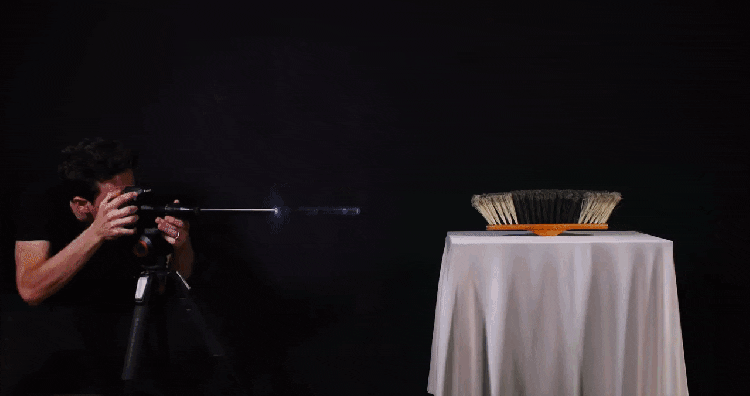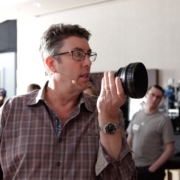Macro: How to Make Images LARGER Than Life!
Question: There’s an interesting lens coming out on a macro probe lens 24 millimeter that seems to make amazing techniques but won’t be out for a while. Is there a way to do this kind of shooting or similar shooting? Also very interested in how you approach lighting for studio macro lens shooting, depth of fields another ballgame in macro world any tips on this.
There’s a company called Innovision who have this amazing probe system.

Cartman wants to learn about macros.
Not the alien type!
This camera probe is probably 18 inches long and you can put all kinds of different types of lenses on it. It clamps on to your PL mount and it works absolutely beautifully.

Camera Probe
You can get incredibly close, pull it through small holes, even pull it out of a trumpet. I used it on The Rat Pack where I was pulling the macro lens out of a trumpet when Sammy Davis Junior was up on stage.
I’ve used it on a lot of commercial shoots for taking things and making them larger than life. You have to light it up to about a 16 or 22 to just get it down the tube. So the light is basically blasting down this very long tube, and by doing that it requires a lot more light. I think the minimum on that lens is a 5, 6, or an 8. But you want to be in the 16 to 22 range anyway just to get stuff in focus. So take a look at Innovision. They have a lot of cool macro things and they’re one of the best probe lenses out on the market. I’ve been using that since the late 80s.

Here’s some tips on your macro work. Just imagine this, and this kind of puts it all in perspective for you: I had a whole life before narrative filmmaking where I was lighting a lot of Barbie commercials. I was lighting Barbie like you would not believe. Barbie had so many different outfits on and so many different environments!

Barbie is ready for her macro closeup.
Okay, what do we do for a human head. If we want to soft light on somebody it’s a sky panel or LED or a cineo or something pushing through a 4×4 diffusion or a 8×8 diffusion. So think about it where our head is a 20th or a 25th of the size of that! Any light that you use has to be small. If you want hard shadows you can’t use big fresnels. You can’t even use a baby because a baby, when you think about it, it’s 6 or 8 inches wide so that light is going to look like a soft source on a macro, on something that’s small.

Macro Toothbrush

Macro Coffee Beans
So what I ended up doing is lighting with all these data lights and little peppers and very, very, small fresnels because for hard shadows and stuff anything that’s bigger than that just doesn’t give you hard shadows. It looks like a soft light because it’s a big source to the small little props that we have.

Macro Bottle
Once you kind of put that in perspective then all of a sudden when you want to do a big soft source or a big bounce, if I were going to do a big bounce to match a day exterior ambience then I would be flying a 20×20 or a 20×40 and then you just decrease that by 10 or 20. And when you get down to it, it ends up being a 1×1, or a 2×2, or a 4×4 card. And that’s kind of what I’ve done to light these smaller props in small macro work.
Take a look at this cool macro stuff that Marmalade, a german company, have been putting together for years. They absolutely crush it!








